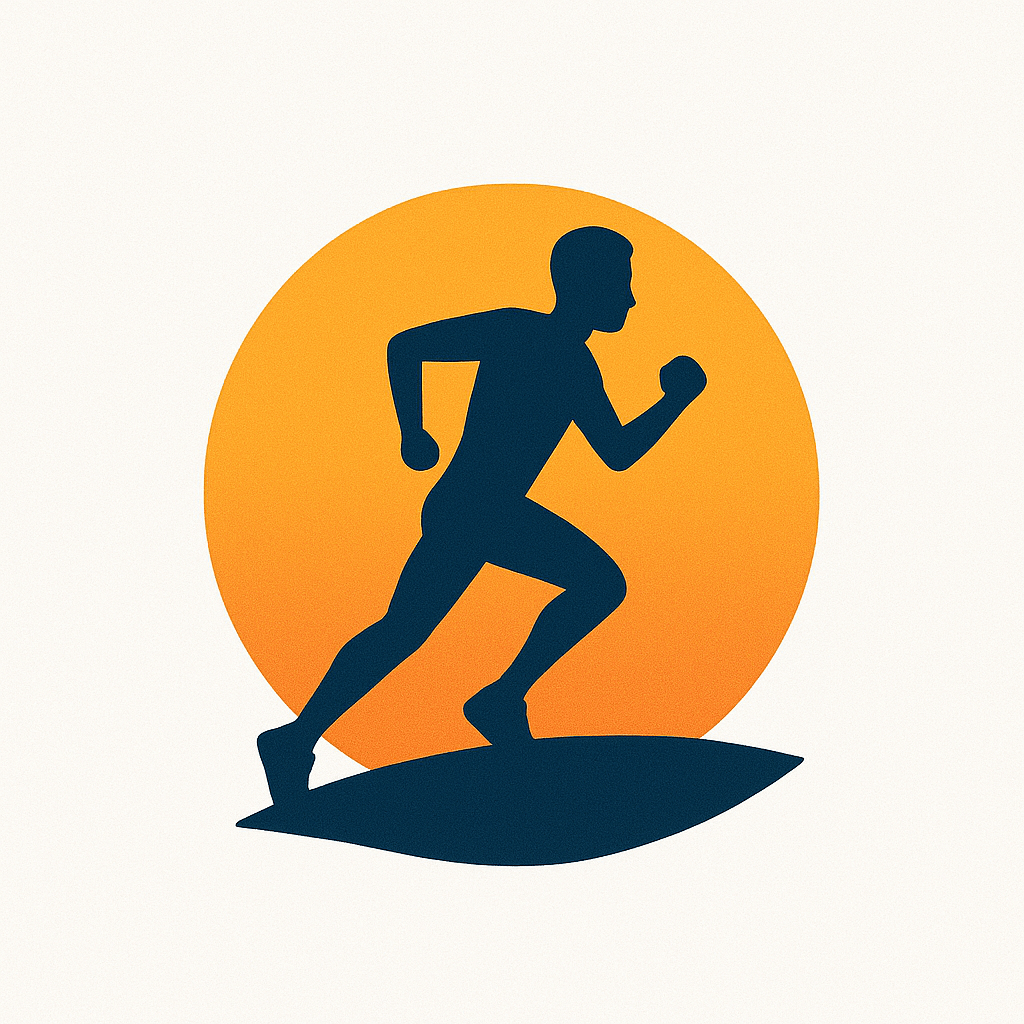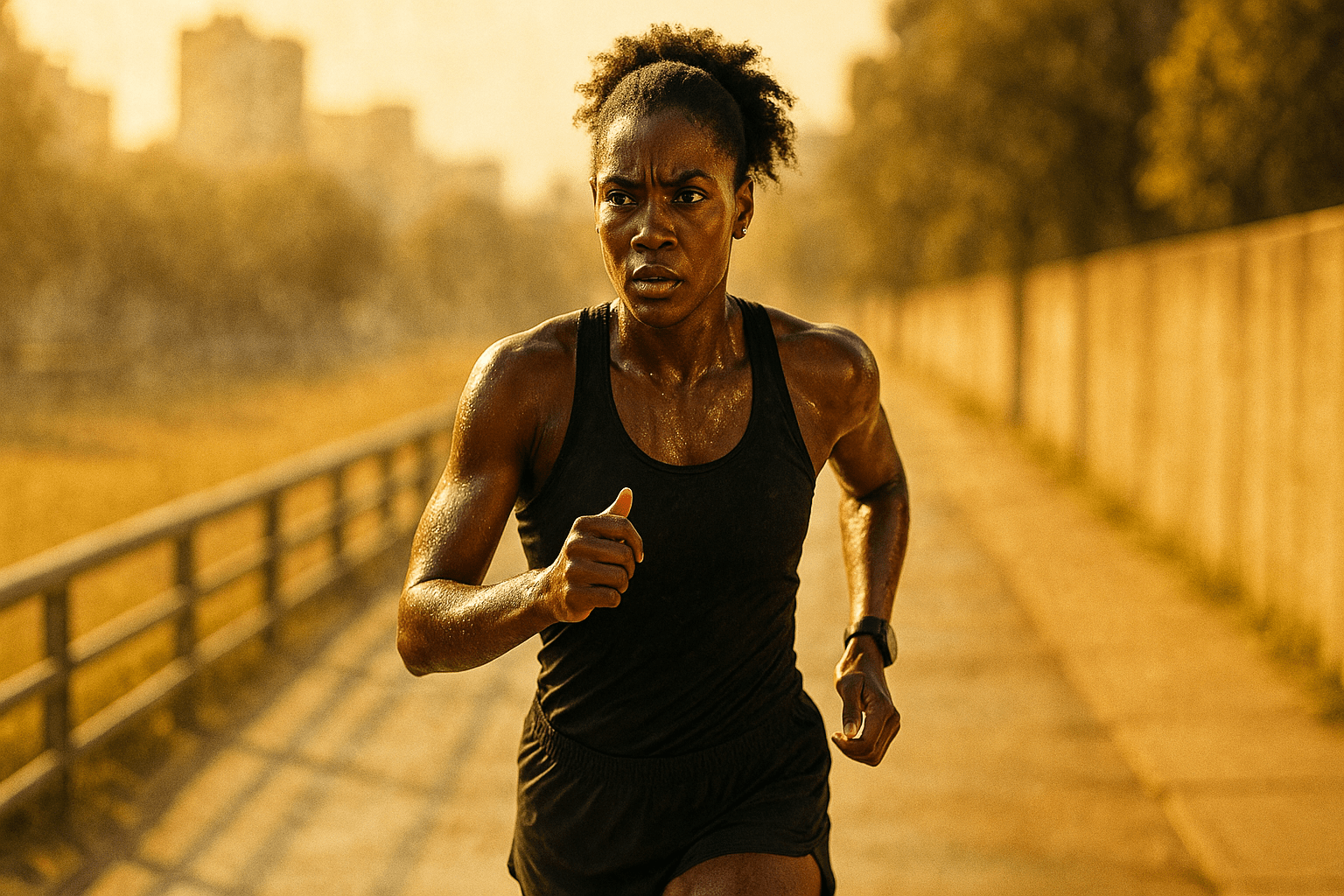When the Heat Turns Up, Should You Slow Down or Adapt?
You step outside and it hits you — the air is thick, the sun is intense, and your body feels sluggish before you’ve taken a single step.
Your first hot-weather run of the season can feel like a betrayal. Your pace drops, your heart rate spikes, and everything just feels harder. It’s easy to wonder: Am I just out of shape?
You’re not. You’re just not heat-adapted yet.
But here’s the exciting part: you can train for this. Just like you build endurance or strength, you can train your body to handle the heat better.
It’s called heat acclimation training, and while it’s not for every runner, it might be the key to unlocking your summer performance — if you do it wisely.
What Is Heat Acclimation Training (and Why Do Runners Use It)?
The Physiology of Heat Acclimation
Heat acclimation is a process where you intentionally expose yourself to warm conditions to help your body adapt. Over 7–14 days, your body starts to make impressive changes:
- Increased sweat rate (and earlier onset of sweating)
- Expanded plasma volume, which improves cardiovascular efficiency
- Lower resting and working heart rate
- Improved thermoregulation, making the same temperature feel less intense
These changes don’t just make you feel more comfortable in heat — they actually improve your performance across all temperatures.
Who Uses It and When?
Elite marathoners use heat acclimation to prepare for hot races like the Boston or Chicago Marathon. Ultramarathoners and trail runners train in the heat to mimic race-day conditions. Even the military uses heat adaptation protocols to prepare soldiers for desert operations.
For recreational runners, it’s not just about racing — it’s about not losing your edge when summer hits. With proper heat training, you can keep your momentum going, instead of dreading the rising temps.
The Mental and Physical Benefits of Adapting to Heat
Boosting Mental Toughness and Resilience
There’s something empowering about learning to run in tough conditions. You’re not just training your body — you’re training your mind.
Hot runs force you to focus, breathe deeper, and push past the initial discomfort. Each session builds mental grit and gives you an edge when the weather cools down again.
You’ll be able to say, “If I handled that run in 90 degrees, I can handle anything.”
Improving Cardiovascular Efficiency
Here’s a bonus: the physiological adaptations you gain from heat training can enhance your performance even in cooler weather.
A 2010 study in the Journal of Applied Physiology showed that heat-acclimated athletes improved their VO2 max and time trial performance — even when tested in a temperate climate. That’s right: heat training is a cross-condition fitness booster.
Your heart becomes more efficient, your cooling system sharper, and your perceived exertion drops over time.
How to Try Heat Acclimation Training Safely
A Step-by-Step Protocol for Beginners
If you want to try heat acclimation, start gradually. Here’s a beginner-friendly protocol:
- Duration: 7–14 consecutive days (or close to it)
- Conditions: Warm environment (above 80°F / 27°C), ideally with some humidity
- Effort: Keep runs short and easy — 20–45 minutes at first
- Timing: Run at the same time of day to get consistent exposure
Can’t run in heat? Try these alternatives:
- Run indoors in layers or on a treadmill in a warm room
- Use post-run sauna sessions (15–30 minutes after an easy run) to simulate heat stress
- Wear light layers during easy runs to raise your body temp slightly (use caution!)
You’ll start to notice less effort, lower heart rate, and a more controlled sweat response by day 5–7. That’s adaptation in action.
Safety First: Signs of Overheating and Dehydration
Let’s be clear: heat is not something to “push through.” It’s something to respect.
Watch for warning signs of heat exhaustion:
- Dizziness or lightheadedness
- Nausea
- Chills or goosebumps in the heat
- Headache or confusion
- Dry mouth and dark urine (signs of dehydration)
To stay safe:
- Hydrate constantly — before, during, and after
- Add electrolytes to your water, especially in humid conditions
- Avoid the hottest hours (10 a.m. to 4 p.m.)
- Always run with a way to cool down quickly (shade, cold towel, water access)
Listen to your body. If it’s telling you to stop — stop.
Embrace the Heat — With Smarts, Not Ego
Heat acclimation training isn’t about proving toughness. It’s about developing smart resilience. When you train with heat, you’re making your body more adaptable, your mind more focused, and your entire running practice more robust.
But it only works if you do it with respect and intention.
Start slow. Hydrate well. Stay aware. Know that rest is part of the protocol. And when in doubt — cool down, not up.
Because the goal isn’t to suffer. It’s to grow.
And with the right strategy, summer doesn’t have to stall your progress — it can supercharge it.






Leave a Reply